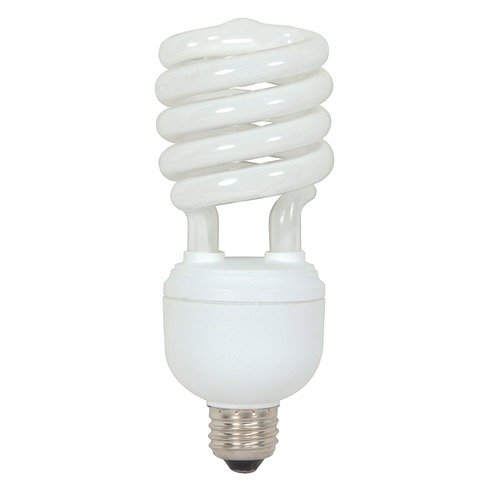LED vs CFL
With the double impact of incandescent bulbs being phased out and being the least efficient choice, it’s time to start considering whether LED bulbs or Compact Fluorescent (CFL) bulbs are the better option. The LED vs CFL bulb debate is an important consideration for anyone who needs to choose lighting for their home.
LED vs CFL: How They Work
Though both bulb types simply screw into a fixture, the way in which they produce light is an important consideration.
CFL Bulbs
CFL bulbs are essentially miniature versions of fluorescent lights that have a unique look. While some may like the twisted appearance for aesthetic reasons, the bulb’s shape is designed to ensure that it contains enough tubing for the electric current while still fitting in a traditional fixture. These bulbs produce light when an electric current reacts with the mercury and argon vapor that fills the tube. When the current mixes with the gas, it creates ultraviolet light that immediately turns into visible illumination.
LEDs
LED bulbs, which are popular options for ceiling fixtures, create light through the use of positive and negative charges. These currents collide and release the light energy that is visible as soon as you flip the switch for the bulb.
Advantages and Disadvantages of LED Bulbs

The lifespan, durability, operating temperatures and cost are just a few of considerations that go into choosing between LED and CFL bulbs. Understanding the advantages and disadvantages of each will give clear direction when it comes to deciding which one is right for your lighting fixtures.
Advantages
- Longer Lasting – LED bulbs last between 20,000 and 50,000 hours, which gives them a lifespan that is around fives times greater than any other option available.
- No Adapters – LED bulbs don’t require adapters to fit into fixtures and bases that are designed specifically for them.
- Decorative Lighting – These bulbs are ideal for use in decorative lighting like LED pendants, outdoor fixtures, and contemporary models. With the ability to fit smaller fixtures, LEDs make it easy to create decorative focal points with lighting in any space.
- Cooler Operating Temperatures – LED bulbs remain cool to the touch and don’t emit high levels of heat, making them a safe and energy efficient option.
- No Filament – LEDs don’t use a filament for creating light, which means they are more durable than traditional incandescent bulbs.
Disadvantages
- Increased Cost – LEDs initially cost more than CFL bulbs, although they do use less energy to provide similar brightness levels.
- Directional Lighting – LED bulbs provide directional lighting, which makes them less than ideal for general lighting throughout the home. However, new technology includes diffusers that spread the light in multiple directions.
- Adapters – Standard LED bulbs are not designed for enclosed fixtures such as recessed lighting, and may need special adapters.
Advantages and Disadvantages of CFL Bulbs
Advantages
- Standard Socket Design – CFL bulbs feature bases that fit in traditional sockets designed for incandescent bulbs.
- Soft Light – Unlike the bright, bluish light of LEDs, CFL bulbs produce soft light that works well for general and ambient lighting.
- Lower Cost – CFL bulbs cost less than LED bulbs, though they do require more energy for illumination.
Disadvantages
- Mercury Content – Compact fluorescent lights contain mercury, which can pose a risk if the bulb breaks.
- Non-Dimmable – Most CFL bulbs on the market aren’t dimmable. Using a dimmer switch results in fluctuations in electrical currents, and using a non-dimmable CFL can result in a fire hazard due to overheating.
- Warmup Time – CFL bulbs require several seconds to reach maximum brightness levels, rather than providing full light at the flip of a switch.
LED vs. CFL Efficiency
Wattage Use
Both bulb types offer increased efficiency over incandescent options, but LEDs use between 0.033 and 0.33 percent less electricity than compact fluorescent bulbs, depending on the wattage. Most LEDs require no more than 17 watts of electricity in order to produce the required light, with many requiring as little as two watts.
Lifespan
When it comes to lifespan, LEDs are the clear winner between these bulb options. CFL bulbs offer a lifespan of around 8,000 hours of use, while LEDs have an average lifespan of 25,000 hours.
Choosing Bulbs Based on Personal Preference
CFL and LED bulbs offer significant advantages over incandescent options, but choosing between the two falls to personal preference. The reduced wattage and cooler operating temperatures of LEDs make them an ideal choice for those concerned with energy savings. However, the lower cost of compact fluorescent bulbs can help save on lighting when replacing numerous bulbs throughout the home.


